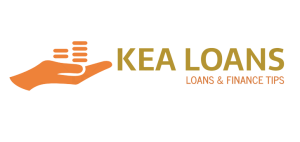
A Quick Overview of Unsecured Personal Loans
Unsecured personal loans are a type of financial aid provided by various institutions such as banks, credit unions, and online lenders. Unlike secured loans, these loans do not necessitate collateral, making them a risk-free option for borrowers.
Unsecured personal loans generally range from $1,000 to $100,000, with repayment terms varying from two to seven years. The most prudent use of these loans is for financial improvement—whether it’s consolidating debt to reduce interest rates or funding a home improvement project to boost property value.
Understanding the Difference: Secured vs. Unsecured Loans
The primary distinction between secured and unsecured loans lies in the requirement of collateral. Secured loans mandate an asset (e.g., a house, car, or savings account) as collateral, which the lender can claim if the borrower defaults on the loan. This arrangement often allows those with lower credit scores to access better interest rates or higher loan amounts than they would with an unsecured loan.
On the other hand, unsecured loans do not require collateral, reducing the risk for borrowers. However, obtaining an unsecured loan often requires a strong credit score and robust financial health. Defaulting on an unsecured loan primarily impacts the borrower’s credit score, rather than risking asset seizure.
Pros and Cons of Secured and Unsecured Loans
Secured Loans:
- Pros: Easier to qualify for with a low credit score.
- Cons: Risk of losing the collateral in case of loan default.
Unsecured Loans:
- Pros: No risk of losing an asset as collateral is not required.
- Cons: Requires a strong credit score and solid financial status for the best offers.
The Functioning Mechanism of Unsecured Loans
To secure an unsecured loan, an application must be submitted to a bank, credit union, or online lender. Upon approval, the loan amount is deposited into the borrower’s account as a lump sum. The borrower then repays the loan in fixed monthly installments over a predetermined repayment period.
The interest rate on unsecured personal loans generally falls between 6% and 36%. This rate is expressed as an annual percentage rate (APR), which encompasses both the interest and any associated fees.
Common Uses for Unsecured Personal Loans
While unsecured personal loans can be utilized for any purpose, they are most beneficial when used to enhance one’s financial situation. Debt consolidation and home improvement are two common uses.
Unsecured Personal Loans for Debt Consolidation
Debt consolidation involves merging debt from multiple sources into a singular monthly payment, preferably at a lower interest rate. Using an unsecured personal loan for this purpose can save money on interest and establish a clear end goal for debt repayment.
Unsecured Personal Loans for Home Improvement
Home improvement projects can be financed through an unsecured personal loan if there’s insufficient home equity or a desire to avoid using the home as collateral. By funding crucial repairs or upgrades, homeowners can potentially increase their property’s value.
Other Uses of Unsecured Personal Loans
Unsecured personal loans can also cover medical expenses not covered by insurance or savings. However, it’s advisable to explore cheaper options before applying, given the potential high cost of financing health-related costs through loans.
One-time, significant expenses like relocation, weddings, or vacations can also be funded through unsecured loans. However, it’s generally recommended to use savings whenever possible to circumvent finance charges.
Qualifying for an Unsecured Personal Loan
While qualification requirements may vary among lenders, certain general factors can enhance the likelihood of securing low rates. These include:
- Good credit: Borrowers with good or excellent credit scores (690 or higher) typically receive the lowest APR on personal loans. Some lenders cater to fair- and bad-credit borrowers (689 or lower), but the best terms and rates are reserved for high-credit-score individuals.
- Low debt-to-income ratio: Many lenders assess whether a borrower’s debt-to-income ratio is low enough to support monthly repayments. While some lenders require a 40% DTI or lower for qualification, others may have higher limits.
- Stable credit history: Lenders favor borrowers who consistently make on-time payments across multiple accounts over several years.
- Steady income: Regular income can assure lenders of a borrower’s ability to repay the loan.
The Application Process for an Unsecured Personal Loan
- Pre-qualify: Shopping around for the best unsecured personal loan is a prudent step. Pre-qualifying with multiple lenders allows borrowers to assess potential loan amounts and rates without affecting their credit scores.
- Apply: After selecting a lender, the next step is to apply for the loan. Many applications are entirely online and require personal details such as name, address, contact details, and Social Security number, along with proof of identity, employment, and income.
- Get funded: Upon approval, the funding time can vary by lender. In some cases, the loan can be funded on the same or next business day after approval.
- Plan for monthly payments: The first payment generally comes due 30 days after closing the loan. Adjusting the budget to ensure on-time monthly payments can help avoid late fees and damage to credit scores.
Alternatives to Unsecured Personal Loans
Along with a personal loan, considering alternatives based on the financing requirement might prove beneficial. This could include:
- 0% APR credit card: Ideal for financing a major expense, repaying medical bills, or consolidating debt. These require good or excellent credit to qualify and debt small enough to be repaid during the card’s interest-free promotional period.
- Home equity loans and HELOCs: Suitable for home renovations if comfortable with using the home as collateral and possessing enough equity to qualify.
Unsecured Personal Loans for Bad Credit
For individuals with poor credit or no credit history, the journey to secure a personal loan can be challenging. However, several lenders cater to such candidates, extending financial aid for emergency expenses, refinancing high-interest debt, or consolidating debt payments.
However, caution is advised. Some lenders may impose higher interest rates, origination fees, early payoff penalties, and late fees on borrowers deemed “riskier.” Therefore, it’s crucial to conduct thorough research and ensure comfort with the loan terms before signing the agreement.
Best Loan Providers for Bad Credit
Several online lenders provide loans to individuals with poor credit, offering easy application processes and reasonable terms. However, it’s essential to remember that not all bad credit loans are created equal. While some online personal loans provide easy application processes and fair terms, others may charge excessive interest rates and have lengthy loan approval processes.
How to Secure a Loan with Bad Credit
Improving one’s credit, avoiding expensive lenders, considering credit unions, and getting pre-qualified are effective strategies for securing an installment loan with bad credit. If the loan isn’t urgent, postponing it for a few months to improve the credit score to the fair range (640 – 699) could offer more loan options with better terms. Avoiding payday lenders and auto title lenders, who charge exorbitantly high fees and rates, is advisable. Credit unions are often more accommodating than banks for those with bad credit. Lastly, using pre-qualification tools can help check approval odds and potential rates with multiple lenders before applying, thereby avoiding unnecessary rejections.
In conclusion, while having bad credit can make the journey towards securing an unsecured personal loan more challenging, it is not impossible. By understanding how these loans work, identifying the right lenders, and adopting effective strategies, individuals with bad credit can successfully navigate the personal loan landscape. Remember, it’s essential to consider all options, conduct thorough research, and make informed decisions that align with one’s financial status and needs.

